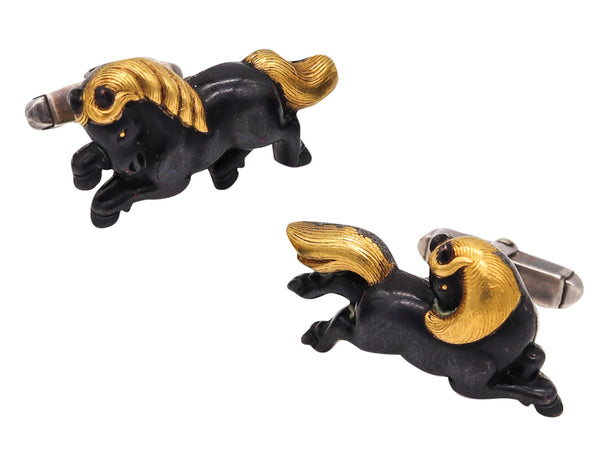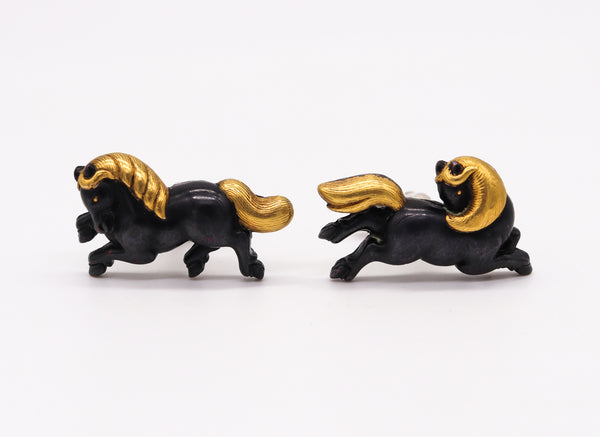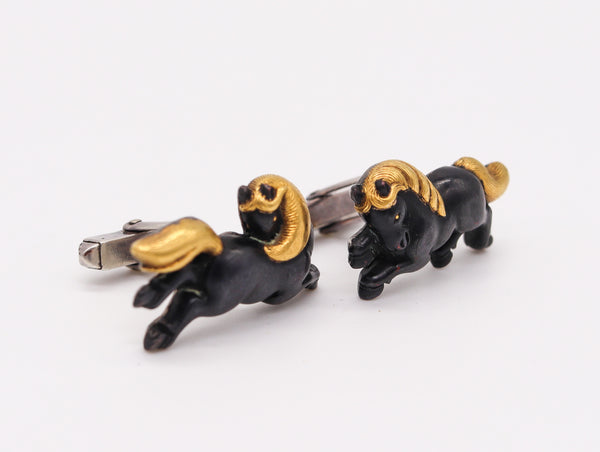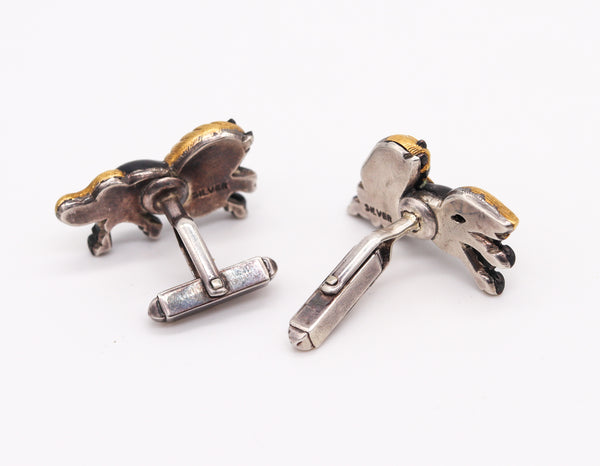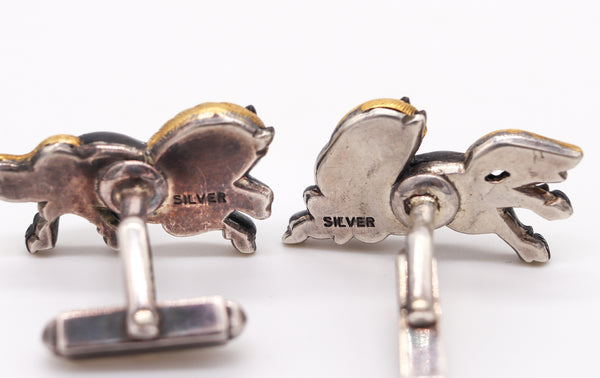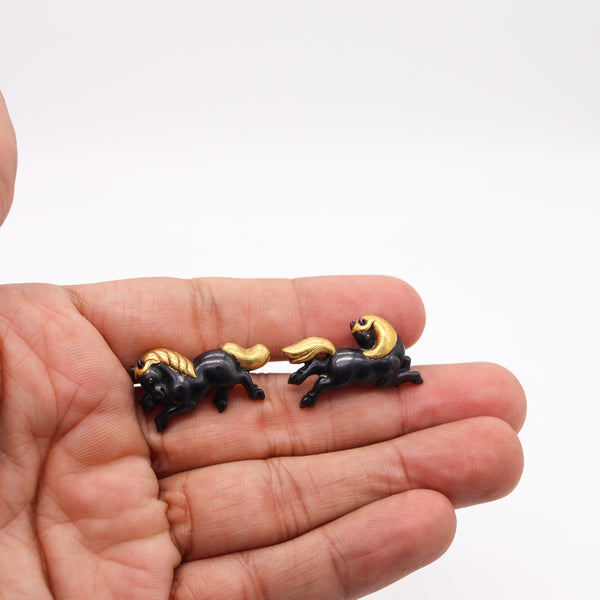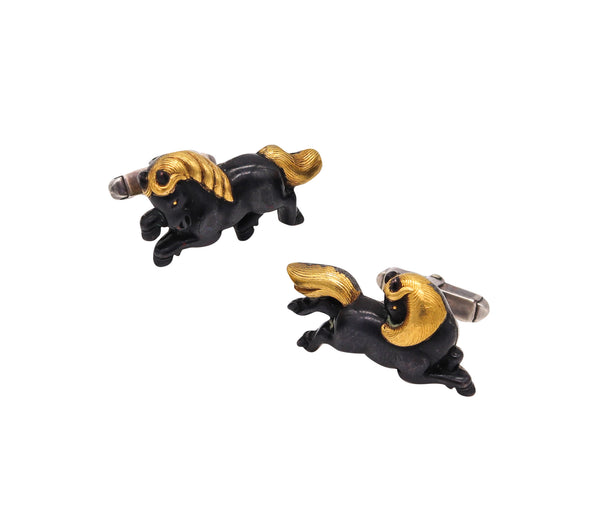Germany 1970 Menuki Cufflinks With Japanese Shakudo In Sterling Silver 24Kt And Bronze
Exceptional vintage Shakudo cufflinks with Japanese Menuki.
Beautiful piece of art, created in Germany back in the 1970. These pair of cufflinks has been crafted in 24 karats yellow gold, .925/.999 sterling silver and blackened patinated bronze (niiro). The mounting is suited with flexibles T bars. The main decorative elements are a pair of genuine Japanese Menukis, depicting two horses, male and female with abundant manes running in different directions.
The menukis displayed in this pair are original parts taken from a sword of the Japanese Edo period (1603-1864). Created with an exceptional Shakudo (mix of metals) technique with blackened bronze and carefully chiseled with rich yellow gold of 24 karats
They has a combined weight of 16.4 grams and a measurements of 29 mm by 16 mm (1.14 x 0.63 Inches).
Stamped, with the European silver assay hallmark, "STERLING".
The menuki (目貫) is one of the multiples parts of a katana sword. They are decorative ornaments that are woven under the Tsuka-ito (the handle wrapping), originally made to hide the mekugi pins that secure the blade to the tang. they are normally positioned forward on one side and back to the other to fit the palm grip.
Note: Shakudo is a Japanese alloy used in sheet metal inlay or wire inlay. The technique involves inlaying gold, silver, and copper into a darkened copper base. Usually, shakudo is composed of 75% copper and 4-25% gold and 5-20% antimony. The word "shakudō" first appears in records of the Japanese "Nara" period (710-784 AD), but it is not clear to what it referred (it could have been some form of copper, or a form of the now-known material). There are actual pieces known from the 12th century onwards. Shakudō was historically used to construct or decorate Japanese sword "nihonto" fittings such as tsuba, menuki, and kozuka, as well as other small ornaments, sliding door catches, and small boxes.
Condition: The overall condition of this pair of cufflinks is excellent. Beside the little normal wear, there is no damage to the gold. All the gemstones, are secured in the settings. This piece has been carefully inspected to guarantee the condition and the authenticity.
INVENTORY REF: P0000AENJ/.1111








